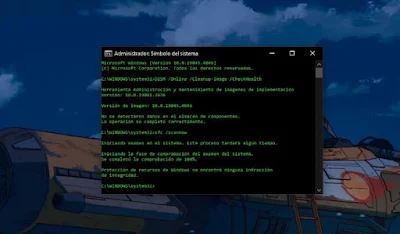Windows has a very useful, hidden tool to fix your computer problems in seconds.

Windows has very useful tools to correct system errors and troubleshoot if the operating system is not working as it should. Although your computer can crash for various reasons, there are functions that allow us to search for corrupted files in the system and check that everything is fine, which can help us rule out problems in the first place.
In this article we will teach you one of the most common procedures to check for corrupted files in the system that caused Windows to crash or the operating system to work incorrectly.
- How to check if your system has corrupted files
If while using your computer for work, streaming content or playing a video game you notice that something is not working properly but you don't know exactly why, fortunately you have tools to check the system status and see if there is any corrupted internal file causing the system to act in a way it shouldn't.
To do this, we will use two well-known commands that allow us to scan the system for corrupt files: DISM and SFC. The first of them will be responsible for checking the integrity of the system and adding any possible missing files to the Windows component store, while SFC will be responsible for scanning and repairing inherited system components.
Both commands have different forms, although their combination can solve certain system problems. To do this, we must open CMD (Command Prompt) with administrator privileges or PowerShell
And put the following commands:
DISM /Online /Cleanup-Image /CheckHealth
sfc /scannow
You need to execute both commands one by one. The latter will perform a scan to check and repair files, so it may take several minutes for the tool to finish scanning the system. After that, a message will appear telling us whether it found corrupted files or not and whether it repaired them.
Although these are not commands that will guarantee to solve the problem, they are very useful tools to start ruling out errors and checking your system for corrupt files that may be causing the system to function incorrectly.
This way, if your computer starts crashing frequently or the operating system is acting up, you can try running these commands before doing anything to try to resolve any potential system errors. These commands have been around for many years, so they are compatible with most versions of Windows.

.jfif)
